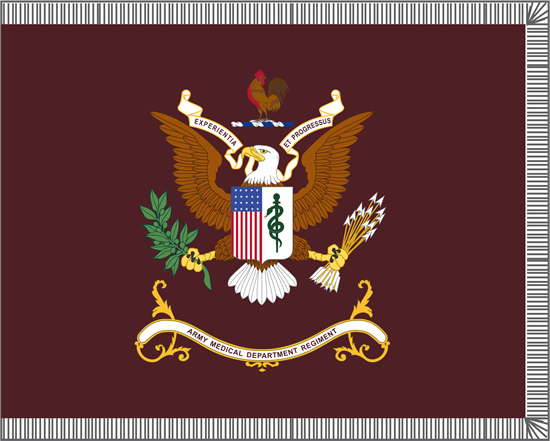
The Design of the Regimental Flag
The new AMEDD Regimental flag is based on an old design, one of the oldest coats of arms used by the United States Army. Developed during the Civil War and approved by Surgeon General William Hammond, the symbolism of the Medical Corps Coat of Arms was selected to represent the medical profession, the Union, and the year of the Medical Department's creation, 1818. The coat of arms was placed on items that had been inspected and approved for use by departmental personnel, such as medicine bottles and medical textbooks. The white stars on a blue background and the red and white stripes represent the United States flag of 1818. The green staff entwined with the serpent, originating in mythology, is symbolic of medicine and healing. Green was a color associated with the Corps during the last half of the nineteenth century. The rooster has a strong connection in medicine which dates back to Aesculapius, the Greek God of Healing. This connection was seen in 399 B.C., a practice at the time was to pay for medical services with poultry. On May 7, 399 B.C., Socrates died under judicial poisoning by drinking hemlock. His last recorded words were, "I owe a cock to Aesculapius, see that it is paid." The motto translates to Experiment/Experience and Advance. A more literal translation is Experience and Progress.

